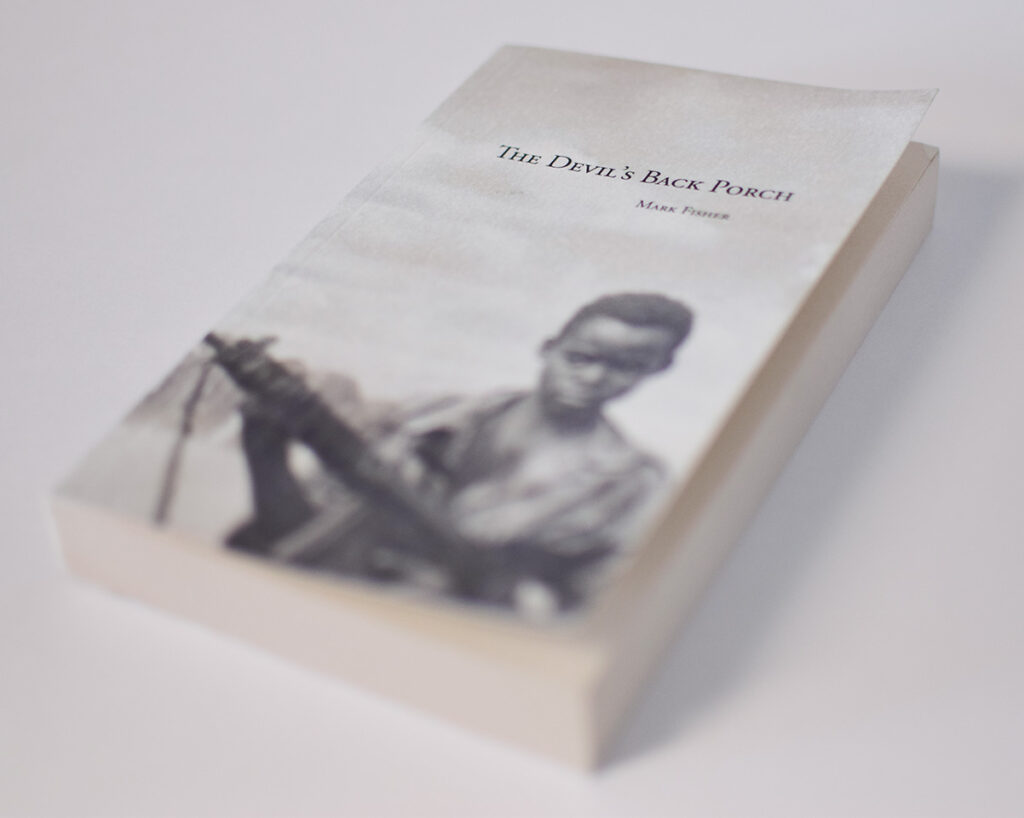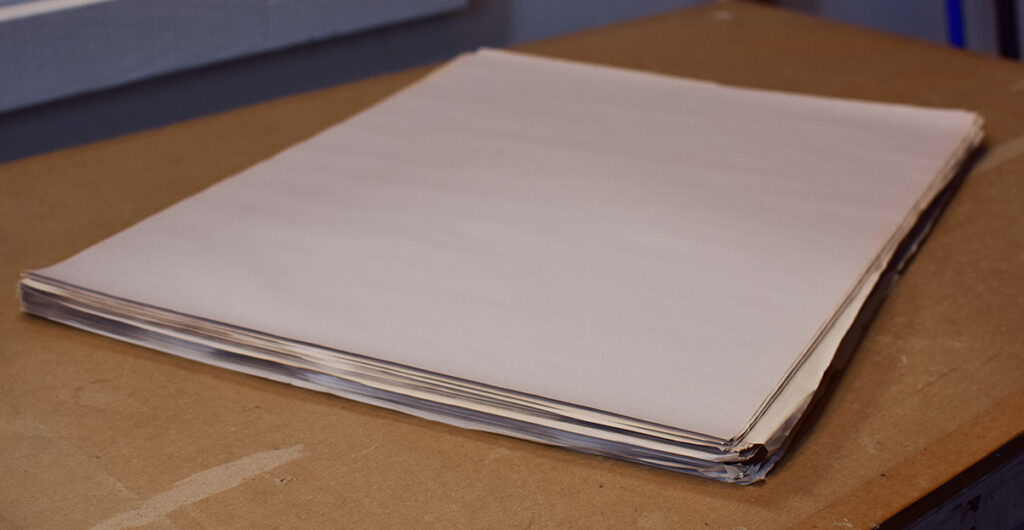The author originally used an online book publisher to self-publish a novel and received a book that, while technically fine, lacked the feel of a paperback book. The cover was too glossy, the inside paper too white, and the whole thing was a little too thick. It felt stiff when you opened it, more like a prop you’d use in a movie than a paperback you’d find in a bookstore.

We were asked to make 20 books that looked and felt like a “real paperback.” With only 20, they’d cost more to print than the resale value of a typical paperback, but that’s what the author wanted—a handful of books, in addition to the batch he’d already bought online, that looked like a mass-market paperback. The online-printed ones would still sell through online marketplaces; these would be a special batch he’d hand out to family and friends.
So we started testing. We knew the inside text had to print on newsprint for authenticity, but most newsprint is thin and soft, and doesn’t have the stiffness required to transfer from one roller to another inside a digital machine. After crumpling a variety of sample sheets inside our press, we settled on a 50-lb. packing newsprint (the stuff that’s usually wadded up to fill voids in shipping cartons). It was never intended for printing, so it didn’t come nicely stacked with square edges or wrapped neatly in reams. It was a loose carton that we had to sort through, pull out sheets with bent corners, and pre-trim the rest to square up all the edges.

We turned the density down on our digital press so that 100% black printed at 85%—not enough to be noticeably grey, but just enough to make it look more like ink, which soaks into paper more than toner. We found a cover stock that was lightly textured and we dulled down the print there too; it was just tactile enough to feel like a paperback with a dull varnish on the cover, no hard shadows or shiny surfaces. We made sure the grain lined up with the spine so the finished book felt flexible—like something you might curl around a water bottle in carry-on luggage.
When all was said and done, the books cost around $20 ea. Ironically, it cost more to make them look cheap & disposable than if we’d printed them on bright white laser paper. But it fit the bill—the pages felt soft and riffled nicely, it even smelled like a pocket paperback. Newsprint doesn’t go through the bleaching process that removes lignin from the pulp, so it will yellow and brittle over time… just like the real thing.

They say the devil’s in the details, and that was certainly true for this book.
If you want to buy a copy of Mark Fisher’s book (not the one we printed, but an on-demand version from lulu.com), you can find it here.
If you want to learn more about Mark Fisher or read any of the other books he’s self-published, you can find his other publications here.